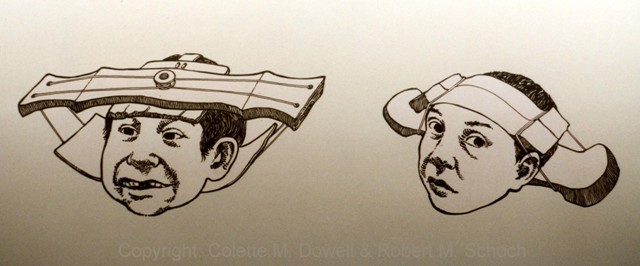
Posted on 03/12/2009 11:00:58 AM PDT by BGHater
Scholars at the Omsk Museum of History and Culture have no conclusive answer as to the origins of these skulls, which were found in burial mounds that are believed to date from the 4th century AD
Because of the skulls' bizarre shape they do not show them to the public, fearing that people might be too shocked.''This really shocked and even frightened people. Because the skull's shape was unusual for a human,'' said Igor Skandakov, director of the Omsk Museum of History and Culture.
Scientists said that the skulls have marks that could be due to artificial deformation of a normal skull. They surmise that the ancient communities deliberately deformed the skulls of their children, by applying force through a head press, almost from the moment of birth. Why they might have done this is not clear.
Over the years, there have been people inclined to believe that the strange skulls belonged to aliens who visited our planet centuries ago. ''There are myths about gods who descended from the heavens and who had elongated heads. They were very special special and were revered,'' said Skandakov.
But most scientists do not accept this idea, and are certain that such deformation was carried out either as a status symbol of belonging to the elite of society, or perhaps as a way to enhance the functioning of one's brain. ''It's unlikely that the ancients knew much about neuro-surgery. But it's possible that somehow they were able to develop exceptional brain capabilities,'' said archeologist Alexei Matveyev.
''These people were some form of living instrument who were able, for instance, to determine whether or not there was danger, as well as to predict the weather,'' said Kirill Makarov, director of the Agency for Social and Informational Technology.
South America:
Dozens of such elongated skulls have been found in many other places of the world, primarily in South and Central America in graves of the ancient indigenous civilisations.
However, they've also been found in graves in France, Norway and Russia's North Caucasus region. In nearly all these cases, the remains are at least 1,500 years old. see
This wide geographic stretch gives rise to yet another question: if such deformation was a fashion statement or an attempt to enhance brain capabilities, how is it possible that it was practised in many different regions of the world that had no contact with each other?
The Omsk museum hopes to answer these questions when it launches another archeological expedition this summer deep in the forests to the north of Omsk. This expedition will repeat efforts made in August 2008 during a similar dig. see
Russian elongated skull ping.

Early Carvilles?

This is interesting. Thanks for the post.
Oh c'mon, we can take it. Bring on the elongated skulls!
Reminds me of that Indy flick...
Can anyone scare up a graphic of early nineteenth-century artist George Catlin’s portraits of Flathead Indians?
Or maybe that was Karl Bodmer.
A wacky hairdo does not a wacky skull make.

LOL. The neo-Carvilleman.

LOL
Ouch.



Disclaimer: Opinions posted on Free Republic are those of the individual posters and do not necessarily represent the opinion of Free Republic or its management. All materials posted herein are protected by copyright law and the exemption for fair use of copyrighted works.